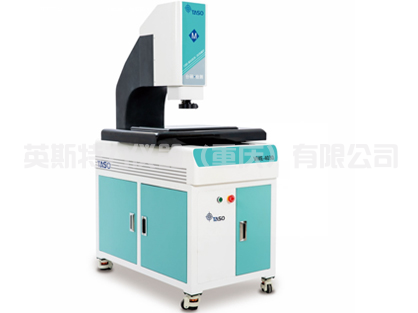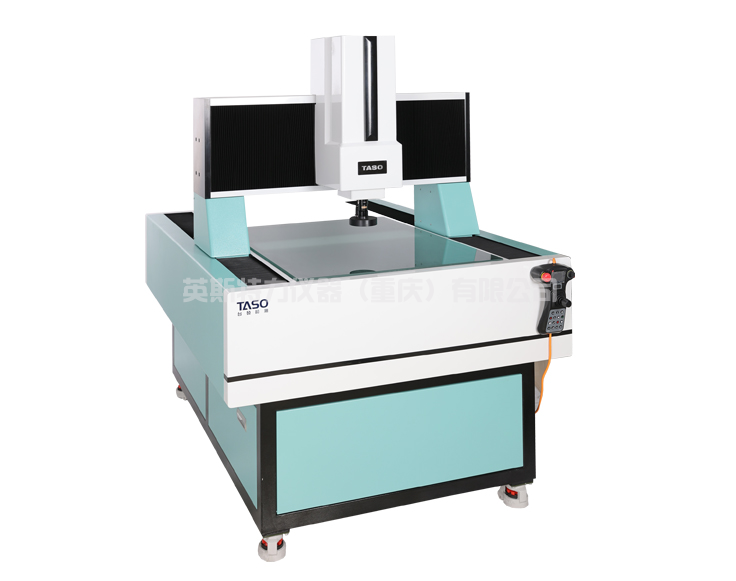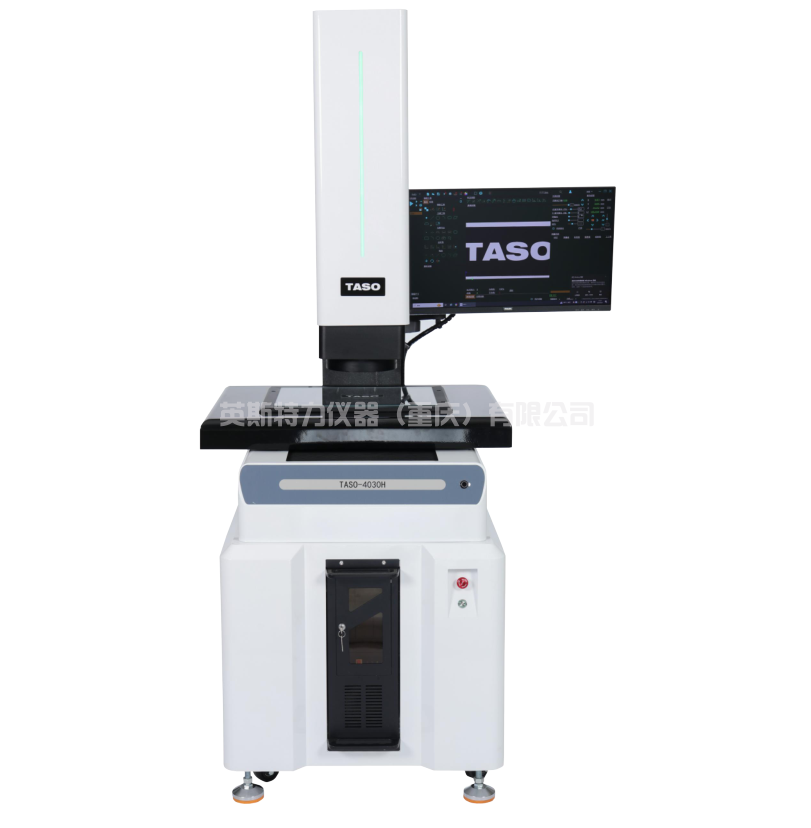热处理是提高和保证机械产品质量和可靠性,提高制造业竞争力的重要基础之一。 其行业水平的高低对制造业的发展起着举足轻重的作用。 目前,除少数厂家外,我国热处理行业整体水平远不能适应加入WTO后热处理行业面临的更加激烈的市场竞争环境。 其中,我国的热处理检测设备更为落后。 严重的限制和障碍阻碍了工艺技术的发展,造成产品质量的不稳定,更重要的是不能有效防止产品不必要的质量事故。 下面我将举例说明机械零件和工具热处理后最常用的硬度测试。
硬度是衡量金属材料软硬程度的指标。 硬度值实际上并不是物理量的单位。 它是代表材料的弹性、塑性、变形、强化率、强度和韧性等一系列不同物理量组合的综合性能。 指标,一般可以认为硬度是指金属表面在小体积内抵抗变形和开裂的能力。 使用便携式里氏硬度计进行硬度检测的实用价值在于不需要破坏工件,可以批量检测零件。 它已成为产品质量检验、制定合理工艺和分析产品质量的重要实验方法之一。
结构件及模具检测实际使用
使用里氏硬度计测试硬度来分析验证大型齿轮轴和齿圈的预处理工艺和渗碳淬火工艺
1. 预处理过程后测试
该工序操作后的质量直接影响渗碳工序后小齿轮和内齿圈渗碳层硬度分布的均匀性,以及轮齿的变形情况。 更重要的是核心(未穿透层)的强度。 用里氏硬度计测试小齿轮的齿部和柄部、外圆内径和内齿圈端面时,如果发现同一区域的最高和最低硬度 测试相差很大,要复查仪器炉温和炉子安装方法。 在工艺冷却方式正常的前提下,根据硬度值的差异和分布,可以推断出工件组织存在偏析或带状组织。 金相图中显示的带偏析是因为黑色珠光体带的测试点硬度较高,而白色铁素体带的硬度较低。 这种结构缺陷在随后的渗碳淬火操作中不能消除,而是保留下来。 大型齿轮轴和内齿轮一旦出现这样的结构缺陷,不仅会在安装和使用过程中造成使用寿命短的问题,而且往往会引发重大设备事故。 当我们通过硬度法测试可以推断出锻件存在这种带偏析时,可以通过固溶处理工艺操作或其他工艺消除缺陷,立即消除带偏析,从而防止设备事故的发生,减少损失 .
2、渗碳后测试
在小齿轮和齿圈的最终热处理过程中,检验人员通常只测试样品的HRC硬度,然后切割样品进行金相分析:马氏体水平、碳化物水平、形态分布、残余奥氏体量、 采用显微硬度计测试从表层渗入层到深层深度以上的HV550硬度作为最终检验。 但从齿轮轴早期失效和齿严重磨损的事故分析中发现,实物硬度低于试样硬度,尤其是深渗碳。 样品不是从同一个块上切下来的,也不是在同一个炉子中预处理的。 这样,实物与渗入前的样品的原始结构不同,渗入后的结构和硬度也有一定的差异。 更重要的是,在整个渗碳过程操作中,由于工件的放置位置和渗碳表面积的巨大差异(化学热处理吸收相界面反应和过程中的主要因素)有非常重要的影响。 浸渗介质各组分的浓度和工件的表面状态、表面形状、表面积和表面能对化学热处理工艺有极其重要的影响。) 里氏硬度计 与洛氏硬度计和显微硬度计对试样测得的硬度进行比较,结合试样渗层的金相组织分析,可以快速准确地找出质量问题的原因。 结合必要的工艺调整,可以在工件组装前消除事故隐患。
使用里氏硬度计测试硬度来分析验证中大型复杂结构的模具技术
这是一种由马氏体不锈钢制成的饲料模具,主要用于生产饲料。 模具上有10000-27000个孔,每小时10吨混合饲料粉末从模具孔区挤出成颗粒。 因此,环模质量和使用寿命的关键控制点是环模上模孔区的硬度和渗层。
由于模具尺寸较大,模具孔分布在外圆,所以测试点为曲面,孔间距一般为3~4mm。 在此条件下,发挥了里氏硬度计的多种适用性和紧凑性。 方便的功能可以准确测试模孔的实际硬度。 根据测得的硬度和试块的金相分析,可以更合理地修改和制定工艺,充分发挥材料的潜力,提高使用寿命。 例如,环模每小时可生产10吨饲料,使用寿命延长10小时,可生产100吨饲料,将为企业带来巨大的经济效益。
里氏硬度计在工模具失效分析中的作用
5CrMnMo制成的大型热锻模具在使用过程中经常因型腔过早磨损和塌陷而失效。
当用里氏硬度计测试磨损区的硬度时,发现磨削的硬度值低于使用前测试的硬度(38-42HRC)在32-34HRC范围内。 这意味着在第二阶段加热红热毛坯(>10000C)的型腔时(型腔内的毛坯加热大致可分为四个阶段),当热量约为80%~85%时,由于 腔壁厚散热慢,有些点温度高达6500C以上。 当模具型腔的温度通过传导加热后超过模具的回火温度时,模具在工作过程中处于连续回火过程阶段,结构和性能的变化会不断发生,导致减少 磨损区的硬度值与发热的发生有关。 磨损,说明5CrMnMo热作模具钢不适用于大型模具。 在使用600-6500C温度范围内的热作模具钢时,如3Cr2W8V和3Cr3Mo3VNb,具有热稳定性、热强度和屈服强度的热作模具钢比5CrMnMo更适合。
我国工业化进程远未完成,亟待缩小与国际先进制造业水平的差距。 作为一个企业,要从战略的高度认识热处理行业,不仅是设备、技术,尤其是检测设备。 吸收国内外新技术,还取决于热处理企业的实际生产和应用。 这是一个非常明智的举动,因为加入世贸组织后,按照世贸组织规则有一个五年的过渡期。 对于我国的制造业来说,这是一个非常关键的时期。 工业企业将基本处于与国外大型企业同等的竞争地位,在这个过渡时期,我们仍然可以充分准备提升竞争力,所以这是对企业非常迫切的要求。
英斯特力仪器是一家集研发、生产及销售于一体的 影像测量仪,拉力试验机, 硬度计 ,探伤仪, 粗糙度仪, 测厚仪, 金相设备厂家, 致力于为客户提供更好的检测仪器。
Heat treatment is one of the important bases to improve and guarantee the quality and reliability of mechanical products and enhance the competitiveness of manufacturing industry. The level of its industry plays a decisive role in the development of manufacturing industry. At present, except for a few manufacturers, the overall level of China's heat treatment industry is far from adapting to the more intense market competition environment faced by the heat treatment industry after China's entry into WTO. Among them, the heat treatment testing equipment in China is more backward. Serious limitations and obstacles hinder the development of process technology, resulting in the instability of product quality, more importantly, can not effectively prevent unnecessary product quality accidents. Below I will illustrate the hardness tests most commonly used after heat treatment of mechanical parts and tools.
Hardness is a measure of how hard or soft a metal material is. Hardness values are not actually units of physical quantities. It represents the comprehensive properties of a series of different physical quantities such as elasticity, plasticity, deformation, strengthening rate, strength and toughness of materials. Hardness is generally considered to be the ability of a metal surface to resist deformation and cracking in a small volume. The practical value of using portable Richter hardness tester for hardness testing is that parts can be tested in batches without destroying the workpiece. It has become one of the important experimental methods for product quality inspection, formulation of reasonable process and analysis of product quality.
The actual use of structural parts and molds testing
The pretreatment and carburizing and quenching processes of large gear shaft and gear ring were analyzed and verified by testing hardness with Richter hardness tester
1. Test after the pretreatment process
The quality of the carburizing process directly affects the uniformity of hardness distribution of the carburizing layer of pinion and inner ring and the deformation of gear teeth. More important is the strength of the core (the unpenetrated layer). When testing pinion teeth and handle, outer circle inner diameter and inner ring end face with The Richter hardness tester, if it is found that the maximum and minimum hardness tests in the same area are very different, check the instrument temperature and furnace installation method. Under the premise of normal process cooling mode, it can be inferred that there is segregation or banded structure in the workpiece structure according to the difference and distribution of hardness values. The band segregation shown in the metallographic is due to the higher hardness of the test point of the black pearlite band and the lower hardness of the white ferritic band. This structural defect is not eliminated but retained during subsequent carburizing and quenching operations. Such structural defects of large gear shafts and internal gears will not only cause short service life in the process of installation and use, but also often lead to serious equipment accidents. When we can infer the existence of this kind of segregation by hardness test, the defects can be eliminated by solution treatment process operation or other processes, immediately eliminate the segregation, so as to prevent the occurrence of equipment accidents and reduce losses.
2. Test after carburizing
In the pinion and ring gear final heat treatment process, the inspectors are usually only test samples of HRC hardness, metallographic analysis and cutting samples: martensite, carbide level austenite content, form, and the microhardness meter test from infiltration of surface layer to deep depth above HV550 hardness as the final inspection. However, it is found from the analysis of early failure of gear shaft and severe tooth wear that the hardness of material object is lower than that of sample, especially deep carburizing. Samples are not cut from the same block, nor are they preprocessed in the same furnace. In this way, the original structure of the material object is different from that of the sample before infiltration, and the structure and hardness after infiltration also have certain differences. More importantly, in the entire carburizing process operation, due to the workpiece placement position and carburizing surface area of the huge difference (chemical heat treatment absorption phase interface reaction and the main factor in the process) has a very important influence. The concentration of each component of the infiltration medium and the surface state, surface shape, surface area and surface energy of the workpiece have very important effects on the chemical heat treatment process. By comparing the hardness of samples measured by Richter hardness tester with Rockwell hardness tester and microhardness tester, the reason of quality problems can be found out quickly and accurately by analyzing the metallographic structure of the permeable layer of samples. Combined with necessary process adjustment, accident potential can be eliminated before the workpiece assembly.
Use the Richter hardness tester to test hardness to analyze and verify the mold technology of medium and large complex structures
This is a feed mold made of martensitic stainless steel, mainly used for the production of feed. There are 10,000-27,000 holes in the mold, and 10 tons of mixed feed powder is extruded into granules from the hole area of the mold per hour. Therefore, the key control points for the quality and service life of the ring die are the hardness and infiltration layer in the hole area of the ring die.
Due to the large mold size, mold holes are distributed in the outer circle, so the test point is curved surface, hole spacing is generally 3 ~ 4mm. Under these conditions, various applicability and compactness of The Richter hardness tester are developed. Convenient function can accurately test the actual hardness of the die hole. According to the hardness measured and the metallographic analysis of the test block, the process can be modified and formulated more reasonably, so as to give full play to the potential of the material and improve the service life. For example, the ring mold can produce 10 tons of feed per hour, the service life of 10 hours, can produce 100 tons of feed, will bring huge economic benefits for the enterprise.
The function of Richter hardness tester in die failure analysis
Large hot forging dies made of 5CrMnMo often fail due to premature wear and collapse of the cavity during use.
When the hardness of the wear zone was tested with a Richter hardness tester, it was found that the hardness values of the grinding were lower than those of the pre-service test (38-42HRC) in the 32-34HRC range. This means heating red-hot blanks in the second stage (& GT; 10000C) of the cavity (the blank heating in the cavity can be roughly divided into four stages), when the heat is about 80% ~ 85%, due to the slow heat dissipation of the cavity wall thickness, some point temperature is as high as 6500C or more. When the temperature of the mold cavity exceeds the tempering temperature of the mold through conduction heating, the mold is in a continuous tempering process stage in the working process, and the changes of structure and performance will occur constantly, resulting in the hardness value of the wear zone is related to the occurrence of heating. Wear, indicating that 5CrMnMo hot work die steel is not suitable for large die. When using hot work die steels in the 600-6500C temperature range, such as 3Cr2W8V and 3Cr3Mo3VNb, hot work die steels with thermal stability, thermal strength and yield strength are more suitable than 5CrMnMo.
China's industrialization process is far from complete and it is urgent to narrow the gap with the international advanced manufacturing level. As an enterprise, we should understand the heat treatment industry from a strategic height, not only equipment, technology, especially testing equipment. The absorption of new technology at home and abroad depends on the actual production and application of heat treatment enterprises. This is a very wise move, because after joining the WTO, there is a five-year transition period according to WTO rules. This is a very critical period for our manufacturing industry. Industrial enterprises will basically be in the same competitive position as large foreign enterprises. In this transition period, we can still fully prepare to enhance competitiveness, so this is a very urgent requirement for enterprises.







 客服1
客服1 